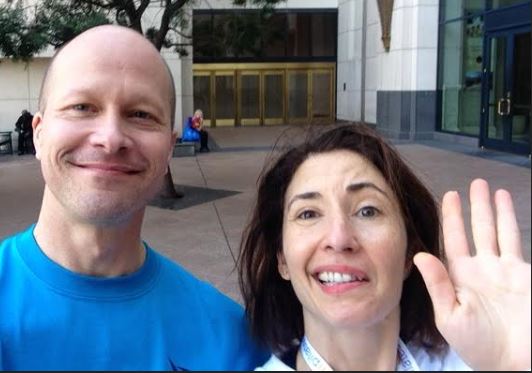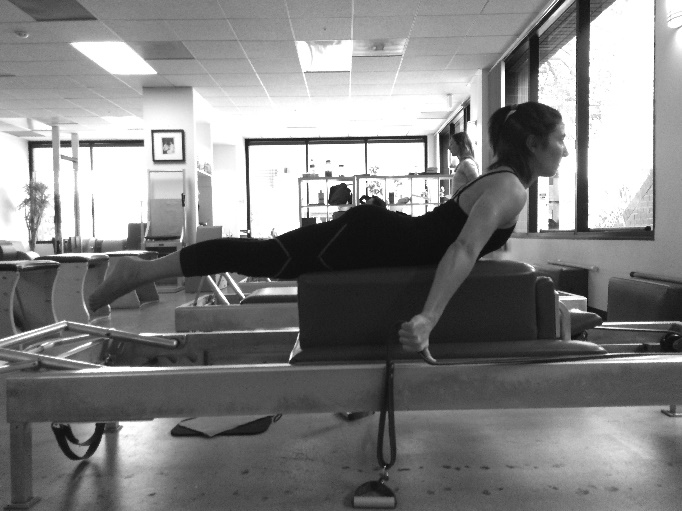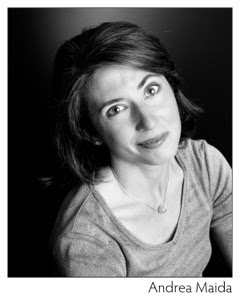Well, for the record, Pull Straps and T (also called Arms Pulling Straps) have been high on my list of most loathed exercises for the majority of my Pilates career. Slowly over the last couple of years we have become better friends and I suspect one day I may even profess to love them. For now, I am happy to have a strategy in place to get the job done.
I whole-heartedly agree with Brett that Pull Straps and T are exercises to be done by the whole body. You need all of the upper and lower body to be fully engaged to find success in these exercises.
I do not find this to be an elegant exercise, however. For me it is a strength move.
LOL, aren’t they all?
Brett’s question:
Despite the radically different individuals to whom one may teach Pull Straps and T, why is it exclusively done with 1 spring in the Classical Pilates system?
The two responses he’s received thus far:
(1) Your own weight + 1 spring = the correct ratio of tension for the exercise, and
(2) It is a rule for a reason, which is akin to “Because that’s how we do it.”
Okay.
Let’s lay out some ground rules about the exercise first.
The Pull Straps and T are exercises about back strength. They may result as well in an opening of the chest. I do not regard this exercise as being for the arms and/or shoulders. A nice side benefit at best. Yes, they are involved, but they are not doing the heavy lifting, shall we say.
The back muscles are large and the arms and shoulders are (generally) smaller and more delicate muscles. You also must engage your entire lower body reaching fully in the opposite direction to find success. The back lifts and extends forward while the stomach, seat and toes reach behind you.
I know, so cavalier, just reach in 2 directions…so easy…
The verdict?
In my experience both of these arguments for 1 spring and 1 spring only are sound.
Response #1 alone implies by virtue of our humanity that each individual would have a unique ratio of body weight to spring tension, yes?
Response #2 “That’s the way we do it.” I agree, may be hard to stomach (pun intended).
But let’s look closer…
The weight of the spring must be sufficient to engage the back muscles and not be just easily moved back and forth by the extremities alone. Yes, there are extreme cases – 88 yr old lady with a hump on her back, yes, you may decide to give her some light hand weights instead of insisting she pull those straps.
Agreed.
But in general, less than 1 spring (in the Classical system, please note we do not have what Brett refers to as a ‘half spring’ so I cannot speak to that) is not sufficient to recruit the bigger and stronger muscles of the entire body. I know I would just pull with my arms if I could.
Heavier than 1 spring would create too much tension in the wrong places.
I have taught thousands of hours but of course I am NOT the genius of the Pilates Method.
Joe Pilates created this exercise and the apparatus.
In my experience, it simply works.
1 spring creates a resistance that is appropriate and the client gets stronger. Like me, they may hate the exercise, they may struggle and shake to locate those muscles on their back, but they get better at it. Joe Pilates was a genius and he has done all the work for us.
Do Pilates. It works.
Moreover, using the skills and expertise of those that come before us – in my case, Joe Pilates, Jay Grimes and Romana Kryzanowska – is not akin to being a cult follower nor is it an atrocity.
If it works, why f@ck with it?
Swan Song
Another thought I have is that we are really looking at the shape of the Swan exercise here.
The Swan, is done as a big flowing movement on the Reformer and precedes the Pull Straps in the order of the exercises. Now in this subsequent exercise we are looking for refinement of the muscular action. I don’t really care if you move the carriage at all if your back muscles are working.
The 1 spring is there to pinpoint the muscles one must cultivate so when you get to the Mat your Swan will be better.
Yes. The true test of how effectively one utilizes the apparatus is simple.
“Have my Mat exercises improved?”
This is the super objective of our work on the apparatus.
There is no need to overthink it. The evidence will be irrefutable.
Here’s_a_related_post I wrote about the value of gravitas, track record and results.
 Brett and Andrea meet up at the 2014 PMA Conference in San Diego.
Brett and Andrea meet up at the 2014 PMA Conference in San Diego.
A graduate of Vintage Pilates inaugural class of The Work, Andrea was thrilled to be invited into Teaching the Work under Jay Grimes, 1st Generation Master Teacher and former student of Joseph Pilates. She has comprehensive training through Excel Movement Studios in Washington, DC and Romana’s Pilates in New York.
Andrea is the owner of a private Pilates studio in Solana Beach, CA and is also an instructor at Vintage Pilates, Jay’s studio in Los Angeles.
She is priviledged to be a teacher and blogger for
pilatesology.com which is dedicated to recording, preserving and spreading Joseph Pilates’ original work worldwide.
Find more information, contact Andrea and read the blog at www.pilatesandrea.com.


